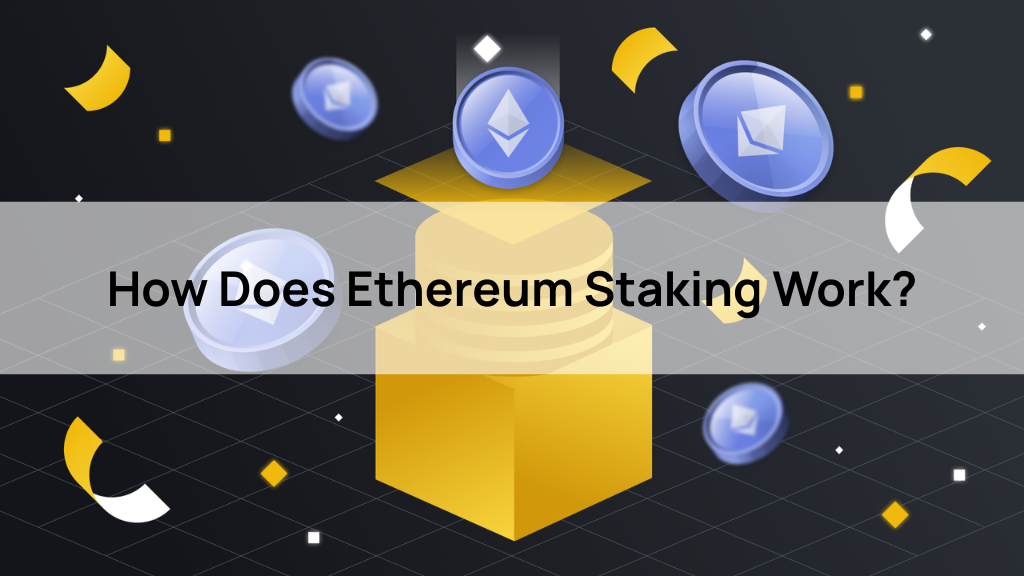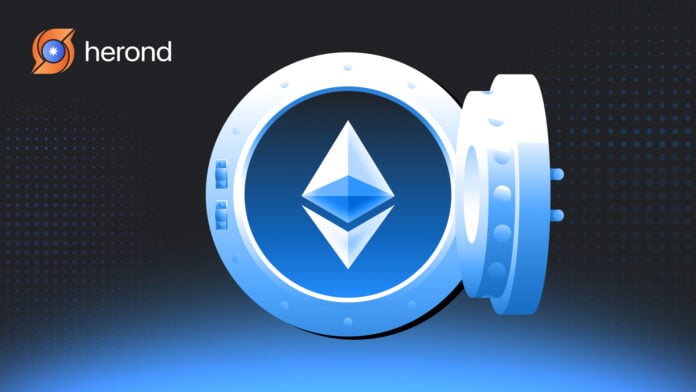Ethereum’s switch to a Proof-of-Stake (PoS) system has totally changed how people can get involved in keeping the network secure and running smoothly. By staking your ETH, you’re not just helping secure the Ethereum blockchain – you’re also earning passive income! With more platforms supporting Ethereum Proof of Stake than ever before, it’s easier for investors to stake their ETH safely and effectively. In this blog, we’ll dive into the top five platforms that make Ethereum Proof of Stake simple, rewarding, and beginner-friendly.
What is Ethereum Staking?
Ethereum staking is a way to earn rewards by helping keep the Ethereum network secure. It involves locking up your ETH to support transaction validation and network security. In return, participants, called validators, earn rewards for their role in maintaining the blockchain.
This system started after Ethereum upgraded to a proof-of-stake (PoS) model during the Ethereum Merge. Instead of using energy-heavy mining, the network now selects validators to confirm transactions based on how much ETH they have staked. This shift makes the network more energy-efficient and secure. However, validators must act responsibly—any dishonest behavior can result in penalties or loss of funds.

For everyday users, staking offers a way to earn passive income without needing to trade actively. By staking ETH through trusted platforms, users can contribute to the network and grow their holdings over time. However, it’s important to choose a secure staking method to protect your investment.
How Does Ethereum Staking Work?
Ethereum staking allows you to earn rewards by locking up your ETH to support the network’s security and operations. To become a validator, you need to stake at least 32 ETH, which enables you to propose and confirm new transaction blocks. This role comes with rewards but also carries risks; dishonest actions can lead to penalties, including slashing, where a portion of your staked ETH is forfeited.
If you don’t have 32 ETH or prefer not to manage a validator node, staking pools offer an accessible alternative. These platforms allow you to stake smaller amounts by pooling your ETH with others. The platform manages the technical aspects, and you earn rewards proportional to your contribution, minus any service fees.

Staking rewards can vary based on network activity and the total amount of ETH staked. On average, annual returns range from 4% to 7%. By staking your ETH, you’re not only earning passive income but also contributing to the security and scalability of the Ethereum network.
Top 5 Platforms Supporting Ethereum Proof of Stake
Bybit
Bybit is a leading cryptocurrency exchange renowned for its user-friendly interface and innovative financial products. Among its diverse offerings, Bybit provides Ethereum 2.0 Liquid Staking, enabling users to stake their ETH with ease and flexibility.
Key Features of Bybit’s Ethereum 2.0 Liquid Staking:
- Accessibility: Users can stake as little as 0.01 ETH, making staking accessible to a broad audience.
- Zero Gas Fees: Bybit covers all gas fees associated with staking, ensuring a cost-effective experience for users.
- Derivative Tokens: Upon staking, users receive stETH tokens, representing their staked ETH. These tokens can be traded or utilized within the platform, providing liquidity and flexibility.
- Daily Rewards: Stakers earn daily rewards, allowing for consistent passive income generation.
- User-Friendly Interface: Bybit’s platform is designed to cater to both novice and experienced investors, simplifying the staking process and integrating seamlessly with other trading tools.

Bybit’s commitment to simplifying the staking experience is further demonstrated through its On-Chain Earn feature, which removes complex technicalities and provides direct access to staking opportunities. Bybit’s Ethereum 2.0 Liquid Staking offers a comprehensive solution for users seeking to participate in Ethereum’s proof-of-stake mechanism, combining accessibility, flexibility, and user-centric design.
Lido
Lido is a decentralized liquid staking platform that allows users to stake any amount of ETH without the need to run their own validator nodes. In return, users receive stETH tokens, which represent their staked ETH and accrue staking rewards over time.
Key Features:
- Liquidity Through stETH Tokens: Lido’s stETH tokens provide liquidity to stakers, enabling them to trade, hold, or utilize these tokens across various DeFi platforms while still earning staking rewards.
- DeFi Integration: stETH can be used as collateral in DeFi protocols such as Aave and Curve, allowing users to engage in lending, borrowing, and other financial activities without unstaking their ETH.
- No Minimum Staking Requirement: Unlike solo staking, which requires a minimum of 32 ETH, Lido allows users to stake any amount of ETH, making staking more accessible to a broader audience.
- Decentralized and Secure: Lido operates through a decentralized protocol, enhancing security and transparency for its users.

By offering these features, Lido has become a popular choice for Ethereum holders seeking to participate in staking without sacrificing liquidity or requiring significant technical expertise.
Frax Finance
Frax Finance offers a cutting-edge staking solution through its innovative Frax Ether (frxETH) system. Designed to balance liquidity and stability, Frax allows users to participate in Ethereum staking without the technical barriers of running validator nodes or meeting the 32 ETH minimum requirement. This makes Frax Finance an attractive platform for both beginners and experienced investors seeking a more flexible staking experience.
Key Features:
- Dual-Token Model (frxETH & sfrxETH): Frax operates with two tokens—frxETH, pegged 1:1 to Ethereum, and sfrxETH, which accrues staking rewards. This system enables users to stake ETH while maintaining liquidity and earning passive income.
- High-Yield Staking Rewards: sfrxETH holders benefit from competitive staking yields, making Frax one of the highest-yielding liquid staking platforms available.
- Seamless User Experience: Frax Finance’s user-friendly design ensures easy navigation and smooth staking processes, catering to both novice and seasoned crypto users.
- Integration with DeFi Ecosystem: frxETH and sfrxETH can be used across various DeFi platforms, expanding utility and maximizing earning potential.
- Decentralized and Transparent: Frax Finance prioritizes decentralization and transparency, offering users confidence in the platform’s security and governance.

Frax Finance’s innovative approach to staking makes it a standout option for those seeking both stability and liquidity in the Ethereum staking landscape.
Binance
Binance stands as one of the largest and most reputable cryptocurrency exchanges worldwide, offering a wide range of staking options, including Ethereum. Its global presence and extensive user base make it a trusted platform for both beginner and experienced investors seeking a seamless staking experience.
Key Features:
- Simplified Ethereum 2.0 Staking: Binance removes the technical barriers of Ethereum staking, allowing users to stake ETH without managing validator nodes or meeting the 32 ETH requirement.
- Competitive Rewards: Binance offers attractive staking rewards, making it a profitable choice for users aiming to maximize returns.
- Robust Security: With advanced security protocols and insurance funds, Binance ensures a secure environment for staking and asset storage.
- Integrated Ecosystem: Users can leverage additional features such as trading, lending, and DeFi integrations within Binance’s expansive ecosystem.
- User-Friendly Interface: The platform is designed for ease of use, providing a smooth staking process for both beginners and seasoned investors.

Binance’s blend of security, competitive rewards, and a user-friendly interface makes it a top choice for Ethereum staking in 2025.
EigenLayer
EigenLayer is an innovative decentralized protocol designed to expand Ethereum staking through its unique restaking mechanism. It allows users to redeposit their staked ETH or liquid staking tokens (like stETH) to secure Ethereum’s Layer 2 networks and other middleware solutions. This process not only enhances Ethereum’s scalability and security but also offers users the opportunity to earn additional rewards.
Key Features
- Restaking Mechanism: Enables users to restake ETH or liquid staking tokens, maximizing capital efficiency and increasing potential returns.
- Layer 2 Support: Strengthens Ethereum’s Layer 2 ecosystems by providing additional security and decentralization.
- Enhanced Rewards: Offers extra incentives for participants who contribute to network security through restaking.
- Decentralized Security Model: Leverages Ethereum’s decentralized validators to secure new protocols without compromising safety.
- Innovative Investment Opportunity: Appeals to advanced and tech-savvy investors seeking new ways to optimize staking rewards.

EigenLayer’s pioneering approach to restaking introduces a dynamic strategy for boosting returns and supporting Ethereum’s evolving infrastructure, making it an exciting option for forward-thinking investors.
Conclusion
Ethereum Proof of Stake has opened exciting opportunities for earning passive income while making the network safer and more scalable. Whether you’re a beginner or a seasoned investor, platforms like Bybit, Lido, Frax Finance, Binance, and EigenLayer offer secure and rewarding ways to stake your ETH. No matter your experience level, these platforms make it easy to join in and grow your crypto holdings.
About Herond Browser
Herond Browser is a cutting-edge Web 3.0 browser designed to prioritize user privacy and security. By blocking intrusive ads, harmful trackers, and profiling cookies, Herond creates a safer and faster browsing experience while minimizing data consumption.
To enhance user control over their digital presence, Herond offers two essential tools:
- Herond Shield: A robust adblocker and privacy protection suite.
- Herond Wallet: A secure, multi-chain, non-custodial social wallet.
As a pioneering Web 2.5 solution, Herond is paving the way for mass Web 3.0 adoption by providing a seamless transition for users while upholding the core principles of decentralization and user ownership.
Have any questions or suggestions? Contact us:
- On Telegram https://t.me/herond_browser
- DM our official X @HerondBrowser
- Technical support topic on https://community.herond.org




